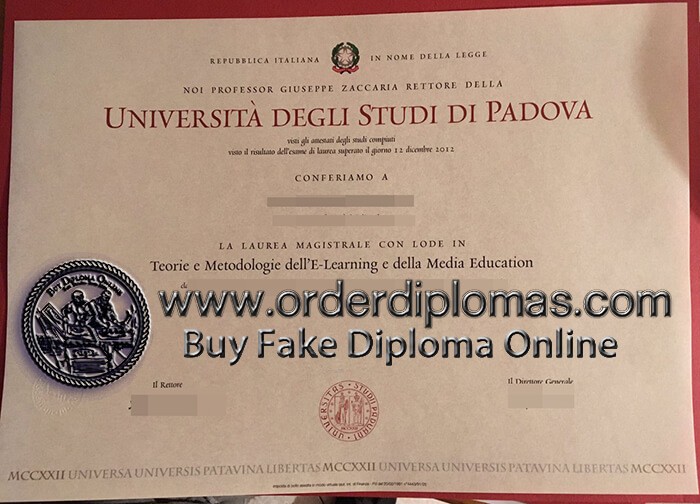
buy fake Università di Padova degree
How to buy fake Università di Padova diploma? how to buy fake Università di Padova degree? how to buy fake Università di Padova certificate? buy fake Università di Padova diploma, buy fake Università di Padova degree, buy fake Università di Padova certificate, buy fake diploma, buy fake degree, buy fake certificate, make fake diploma, order fake diploma.
The University of Padua (Italian: Università degli Studi di Padova, UNIPD) is an Italian university located in the city of Padua, region of Veneto, northern Italy. The University of Padua was founded in 1222 by a group of students and teachers from Bologna. Padua is the second-oldest university in Italy and the world’s fifth-oldest surviving university. In 2010, the university had approximately 65,000 students. In 2021, it was ranked second “best university” among Italian institutions of higher education with more than 40,000 students according to Censis institute, and among the best 200 universities in the world according to ARWU.
History
The university is conventionally said to have been founded in 1222 when a large group of students and professors left the University of Bologna in search of more academic freedom (‘Libertas scholastica’). The first subjects to be taught were law and theology. The curriculum expanded rapidly, and by 1399 the institution had divided in two: a Universitas Iuristarum for civil law and Canon law, and a Universitas Artistarum which taught astronomy, dialectic, philosophy, grammar, medicine, and rhetoric. There was also a Universitas Theologorum, established in 1373 by Urban V.
The student body was divided into groups known as “nations” which reflected their places of origin. The nations themselves fell into two groups:
the cismontanes for the Italian students
the ultramontanes for those who came from beyond the Alps
From the fifteenth to the eighteenth century, the university was renowned for its research, particularly in the areas of medicine, astronomy, philosophy and law. During this time, the university adopted the Latin motto: Universa universis patavina libertas (Paduan Freedom is Universal for Everyone). Nevertheless, the university had a turbulent history, and there was no teaching in 1237–61, 1509–17, 1848–50.
The Botanical Garden of Padova, established by the university in 1545, is one of the oldest gardens of its kind in the world. Its alleged title of oldest academic garden is in controversy because the Medici created one in Pisa in 1544. In addition to the garden, best visited in the spring and summer, the university also manages nine museums, including a History of physics museum.
The university houses the oldest surviving permanent anatomical theatre in Europe, dating from 1595
The university began teaching medicine around 1250. It played a leading role in the identification and treatment of diseases and ailments, specializing in autopsies and the inner workings of the body.
Since 1595, Padua’s famous anatomical theatre drew artists and scientists studying the human body during public dissections. It is the oldest surviving permanent anatomical theatre in Europe. Anatomist Andreas Vesalius held the chair of Surgery and Anatomy (explicator chirurgiae) and in 1543 published his anatomical discoveries in De Humani Corporis Fabrica. The book triggered great public interest in dissections and caused many other European cities to establish anatomical theatres.

 USA Diplomas
USA Diplomas Canada Diplomas
Canada Diplomas UK Diplomas
UK Diplomas Australia Diplomas
Australia Diplomas Germany Diplomas
Germany Diplomas Malaysia Diplomas
Malaysia Diplomas Singapore Diplomas
Singapore Diplomas Other countries
Other countries Transcript-Form.xlsx
Transcript-Form.xlsx
